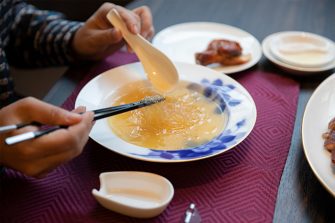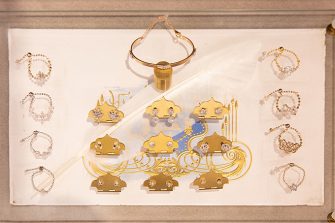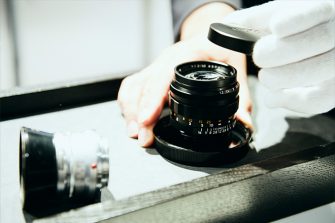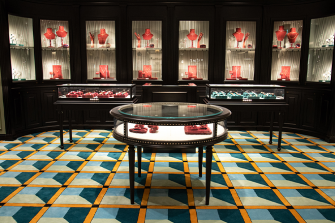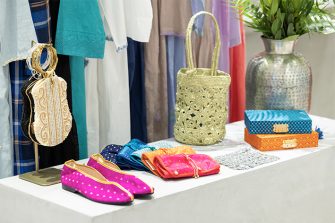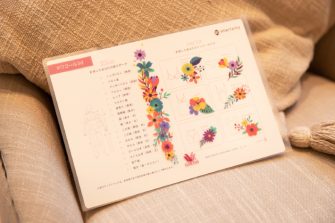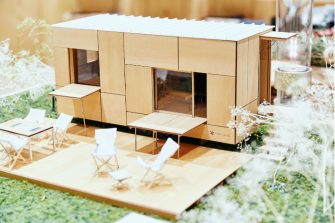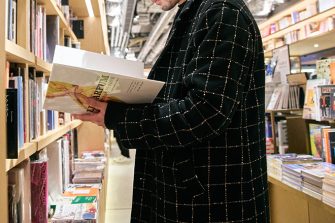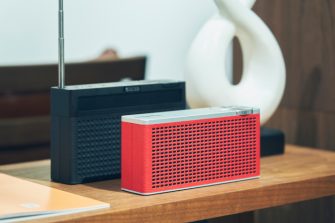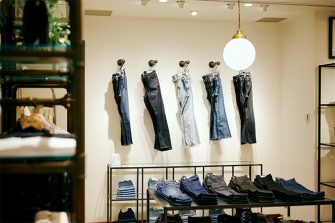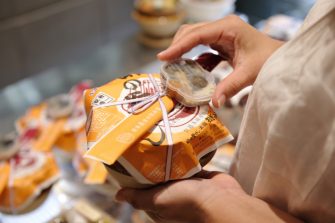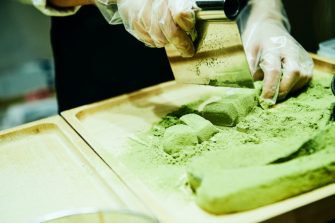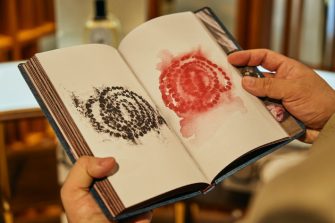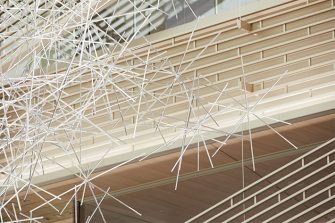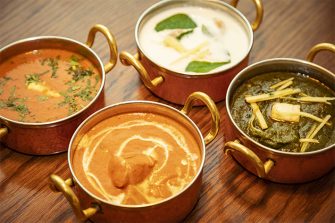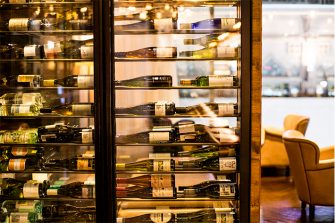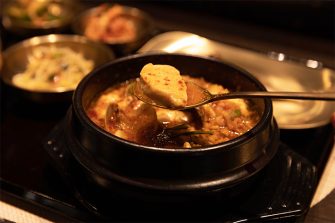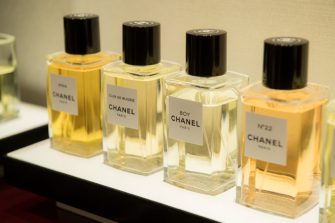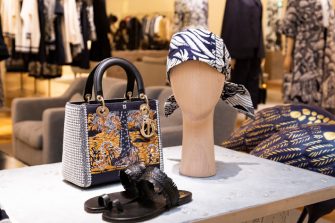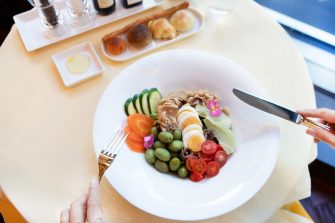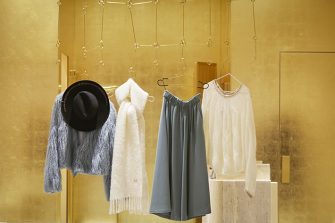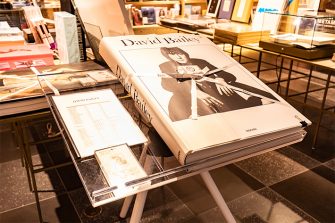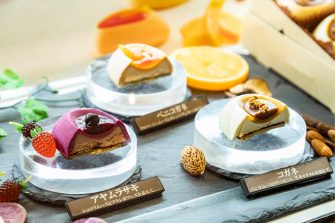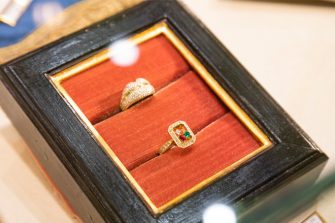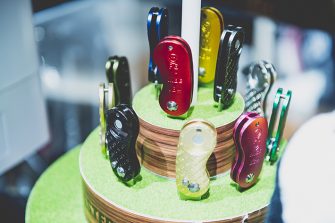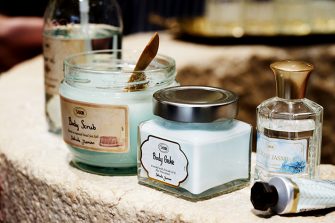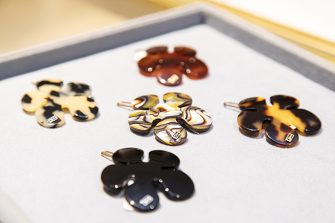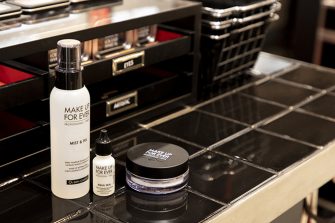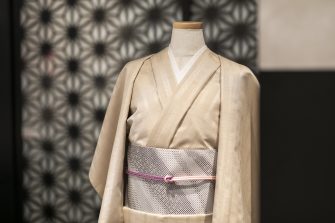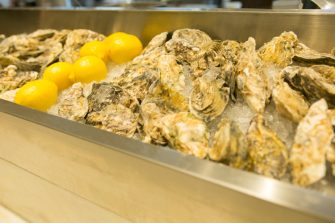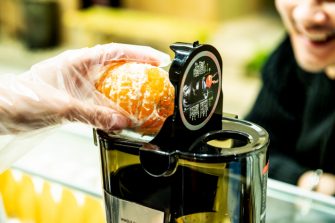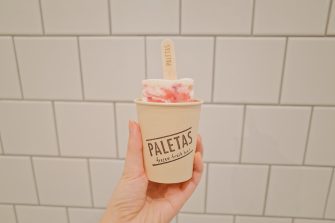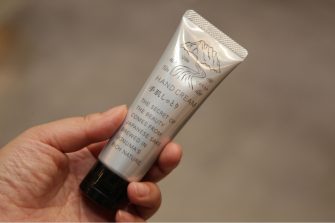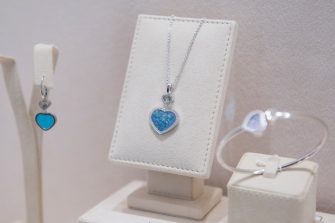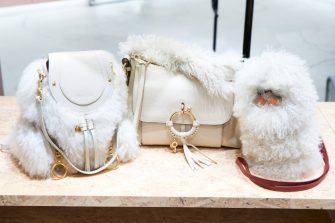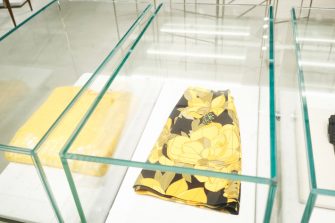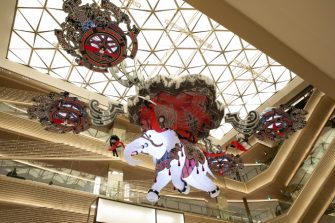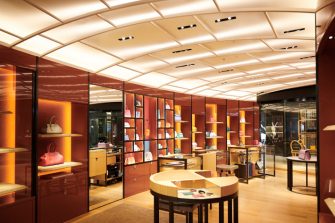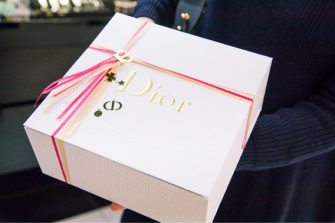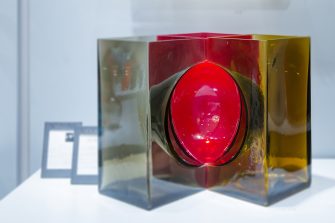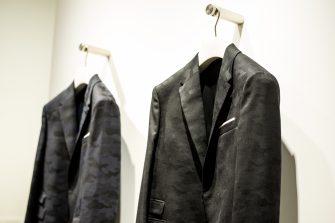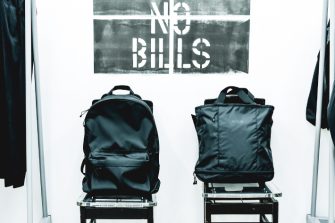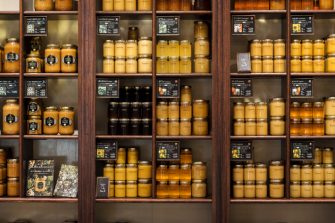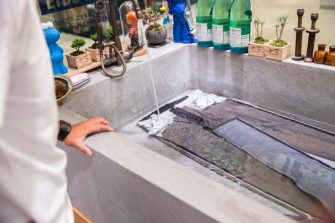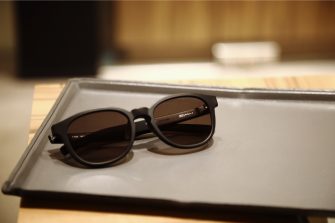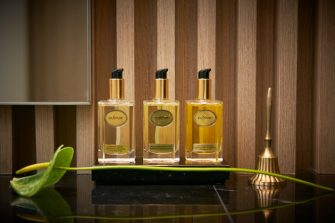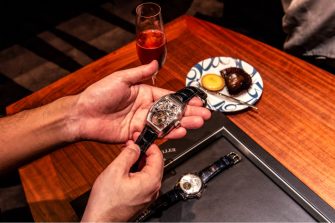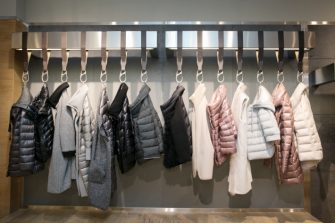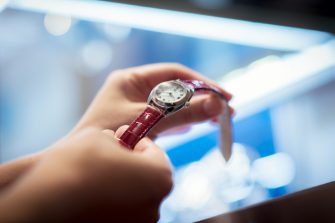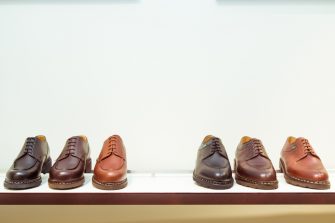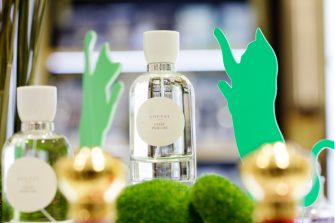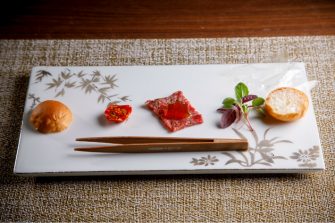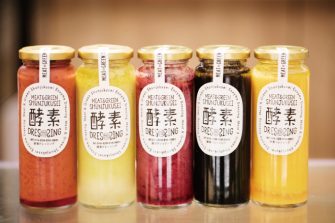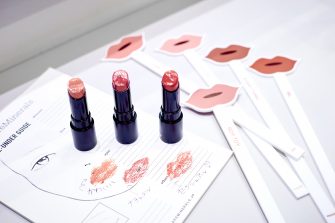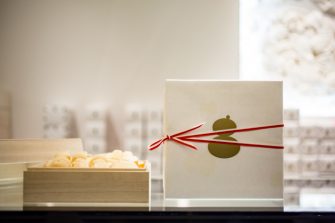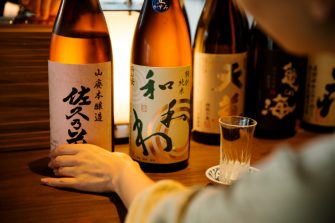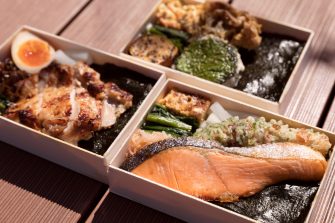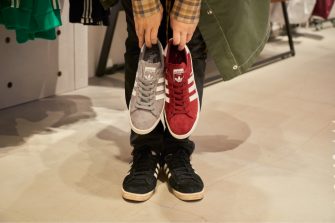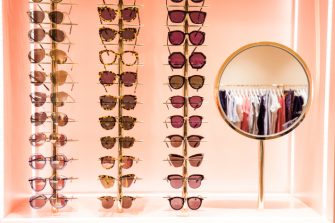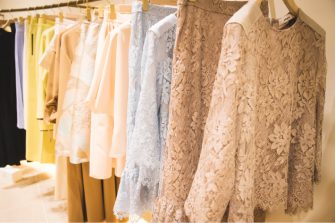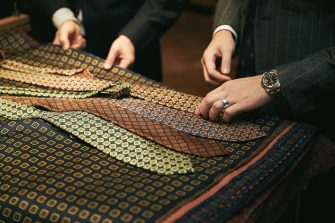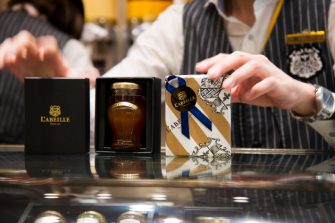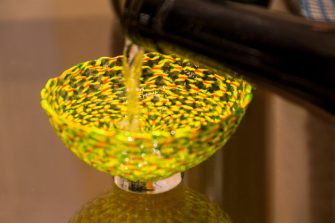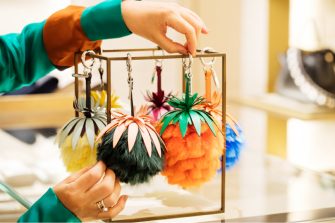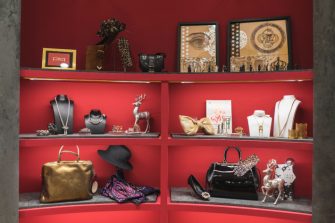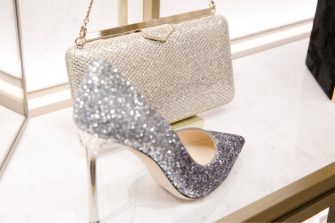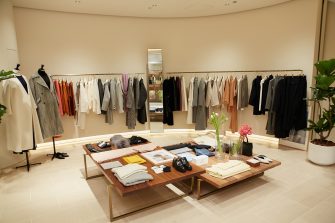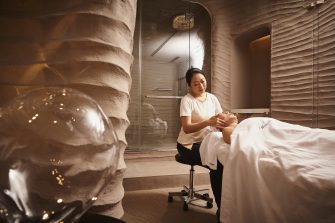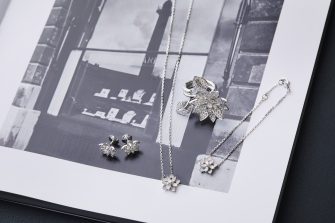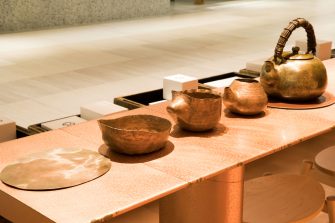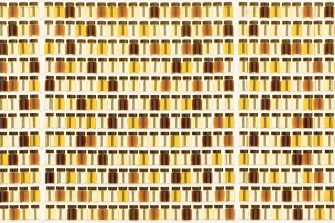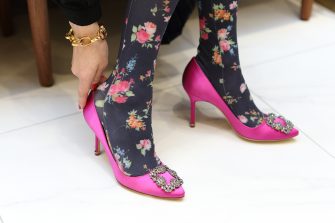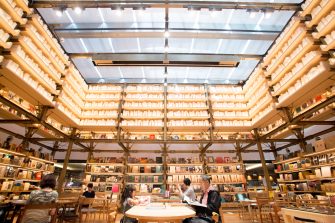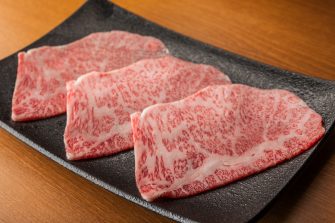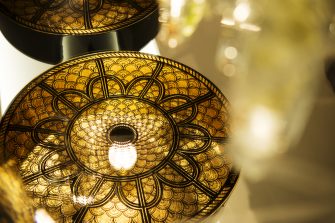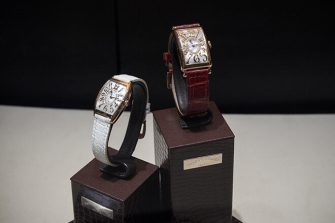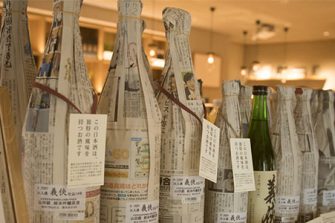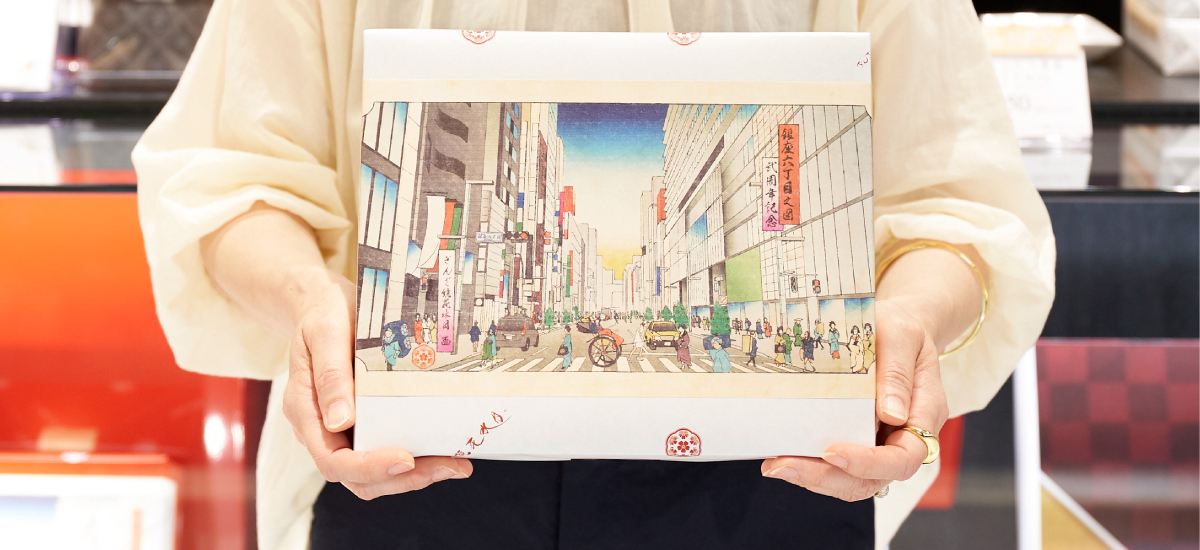

GINZA SIX EDITORS
时尚、珠宝&手表、生活方式、美容、食品…
精通各种类型的个性丰富的编辑们,在GINZA SIX上闲逛
记述走路发现的乐趣。
通过GINZA SIX体验“温故知新” Learning from the Old to Create the New at GINZA SIX
北村美香
GINZA SIX EDITORS Vol.78
“银座所有的东西都齐全。”大约20年前采访过的某歌舞伎演员告诉我们。“从足袋专卖店到绸缎店,从每天的米饭材料到高品质的餐厅,什么都有吧?” 是啊,我也在采访结束后买食材,选择朋友和家人的礼物。为了商讨去咖啡厅,观剧和hare日的吃饭,经常去银座。在东京长大的我,也许是去过最多的城市。去银座参拜时,又增加了一个有趣的地方。「GINZA SIX」。就像浓缩了银座这条街道一样,有240多家店。今天下午开始商谈,中午前后去闲逛GINZA SIX。作为饮食记者,首先要检查餐厅和咖啡厅。哎呀,这也许正适合下次的碰头会!
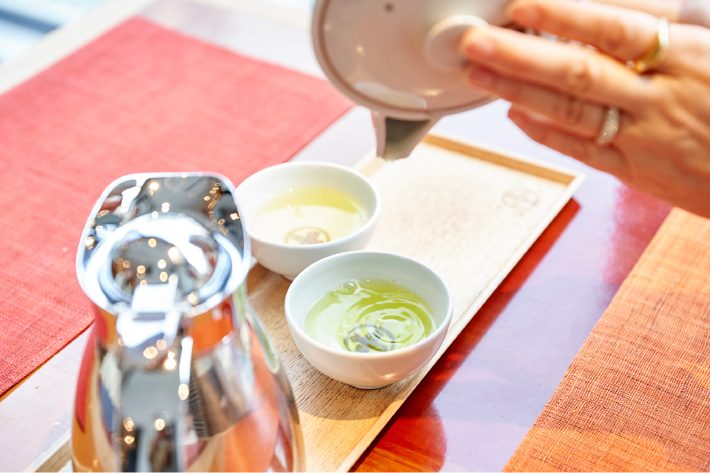
首先进去的是4F的“中村藤⇔1340;总店”的咖啡店。这是安政元(1854)年在京都宇治的宇治茶专卖店。以胜海舟赠送的“茶烟永日香”为家训,向天皇陛下献上茶。这是一家从茶道家元那里得到茶铭,一心一意地走过茶业的老字号。大约20年前,在当时开始流行的生巧克力中加入抹茶的划时代的商品就是这家店。那么,去窗边的桌子座位吧。可以俯视石板连绵的石板路。仅仅100米左右的街道上也有我喜欢的店,能感受到银座历史的街道一直持续着。看着这里能喝茶。银座的好地方。
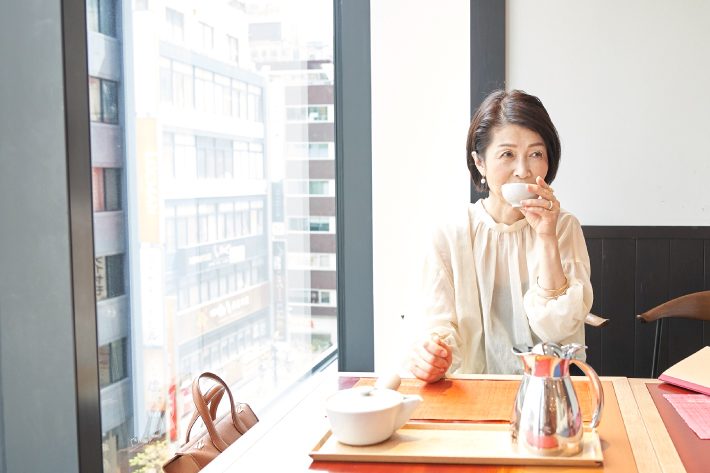
桌子上放着茶具。今天的茶。哎呀,每天都能喝各种各样的茶。今天是中村藤,本店的代表品牌“中村茶”。混合了煎茶和玉露等7种茶。对了对了,混合茶在茶业界被称为“合组”。
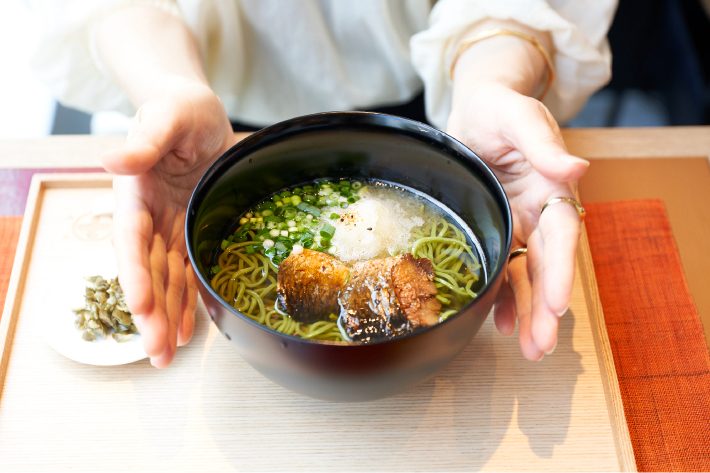
现在是中午前。看了菜单,因为有京都特色,所以想吃。“鲱鱼茶荞麦面”(1204日元※以下全部不含税价格)。在加入了抹茶的茶荞麦面上,放上了薄甜柔软煮好的鲱鱼。汤汁的风味渗透到身体里。配上的“村上重总店”的酱菜也是可以改口。嗯。这种味道只能在京都吃到。听说“以宇治总店为首的其他店都是秋季限定的,银座全年都会出售”。东京,而且在银座,关西风味的荞麦面非常稀少。这里的甜食很有名,今后我会以这个为目标。

但是,果然还是让人目不转睛的是巴菲。在鲜奶油的上面,用抹茶漂亮地描绘了表示商号“丸と”的花纹。抹茶雪纺蛋糕、抹茶冰淇淋、糯米团子、生茶zeri、抹茶冰淇淋重叠在一起,再加上小麦糕点的口感、弗兰沃斯的酸味、栗子甘露煮和丹波大纳言小豆的甜味,是抹茶味的交响曲。因为对甜味好的咸梅控制,所以醇厚的茶的美味很吸引人。吃了荞麦面之后,还是饿了。“圆和巴菲(抹茶)”(1,297日元)
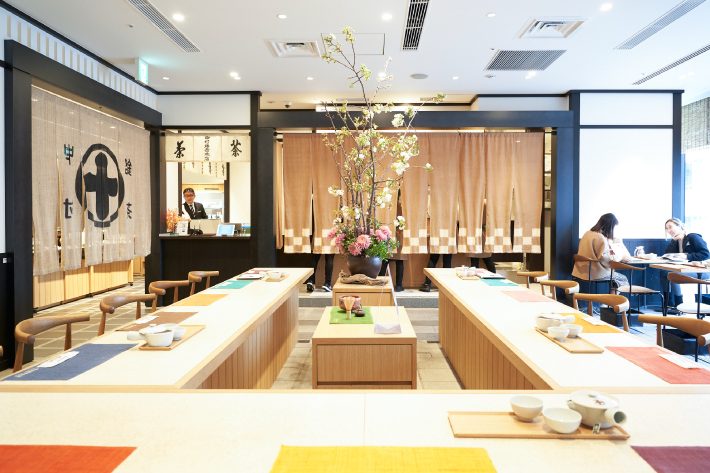
店内是コ字形的柜台和桌子席。从一个人到带着孩子,到团体,各个阶层的客人都很享受。白天很拥挤,所以推荐上午。

请一定要喝“中村藤⇔33;总店”的真正骨头茶! 甜味、美味、苦涩味道均衡的煎茶、有深度、宇治特色的玉露、温和味道的焙茶等,什么都有。店长日野阳菜凭借丰富的商品知识和对商品充满爱的说明来对应。这种礼貌本身就是店里的诚意。
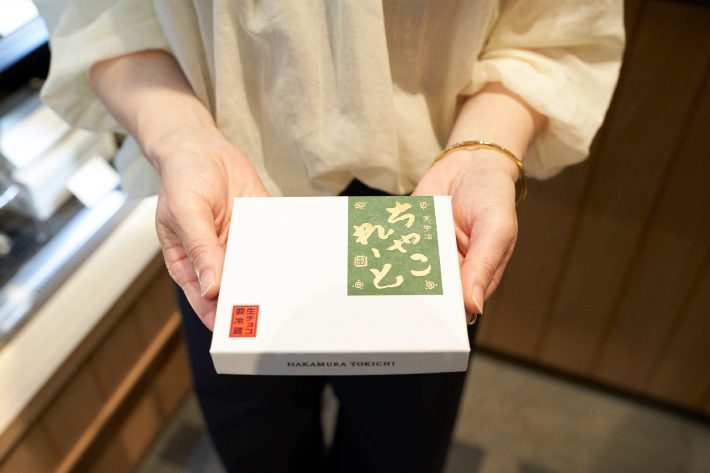
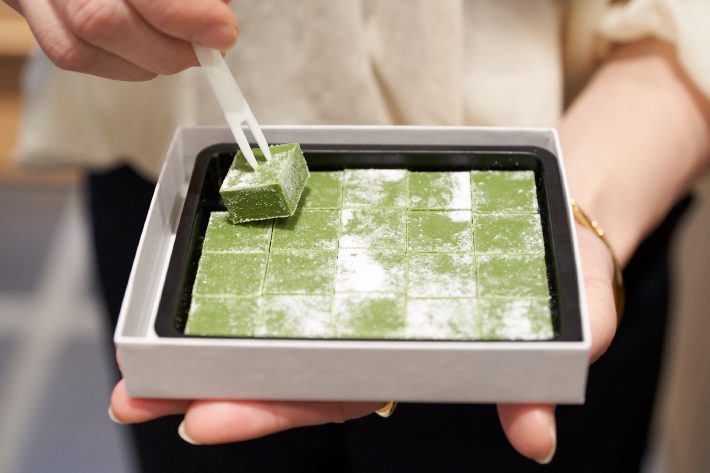
我大约20年前采访过的《生吧》(1200日元)。我记得当时开始追求真正的味道,感受到了老字号的潜力。能让人觉得讨人喜欢的名字也不错。现在以排队的“生茶zeri”为首,抹茶渣滓、加入涩栗抹茶芝士蛋糕等人气商品登场。
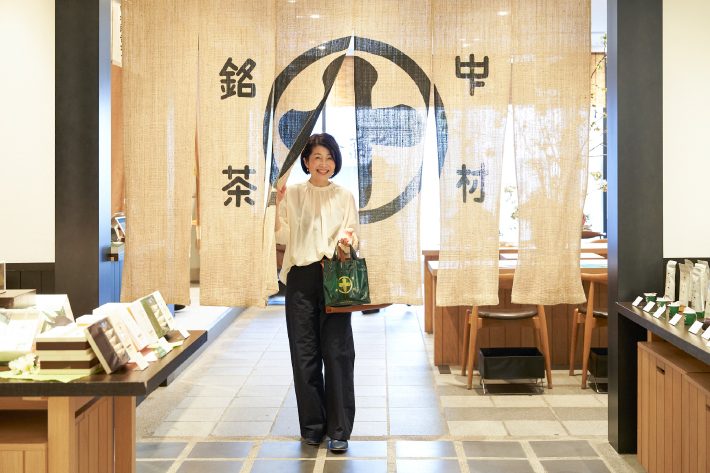
穿过代表老字号风格的大门帘的行为让人情绪高涨。
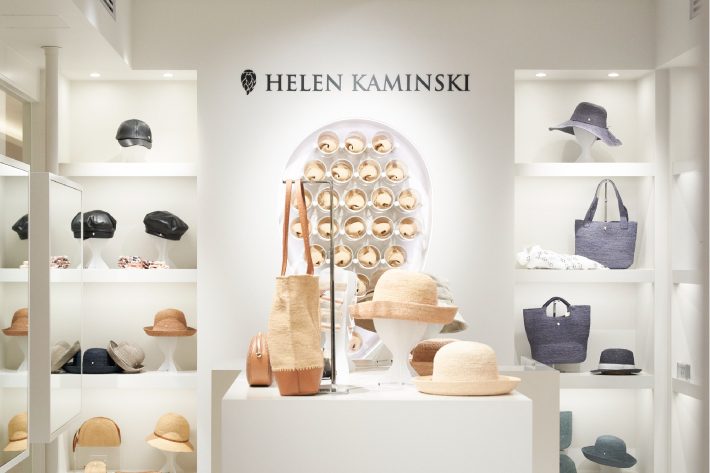
“中村藤⇔63;总店”所在的4F也有时尚和生活方式的店。到处闲逛的时候,最喜欢的海伦卡明斯基。十几年前,因为工作去澳大利亚的时候,在当地的店买了帽子,现在也很喜欢用。创立者海伦・马利・卡明斯基为了保护自己的孩子们不受烧焦的澳大利亚阳光的侵害,1983年亲手制作了拉菲亚帽子。
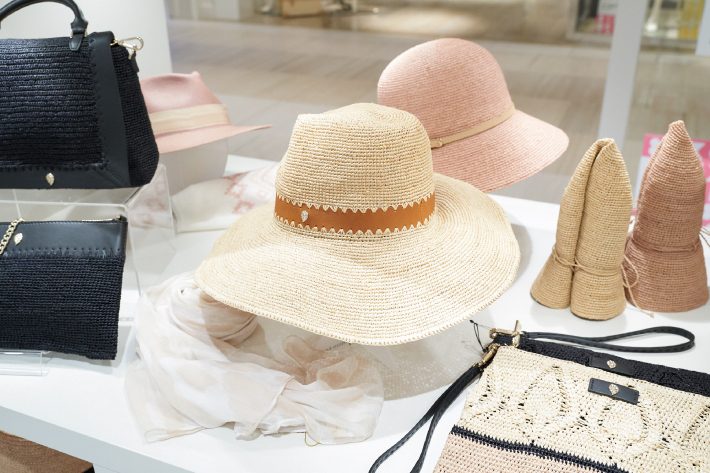
最近,我开始养狗,因为在寻找散步用的帽子,所以很在意普林(燕子)的扩大。喜欢的是“Acheron”(38000日元)。古典风格的乐队。
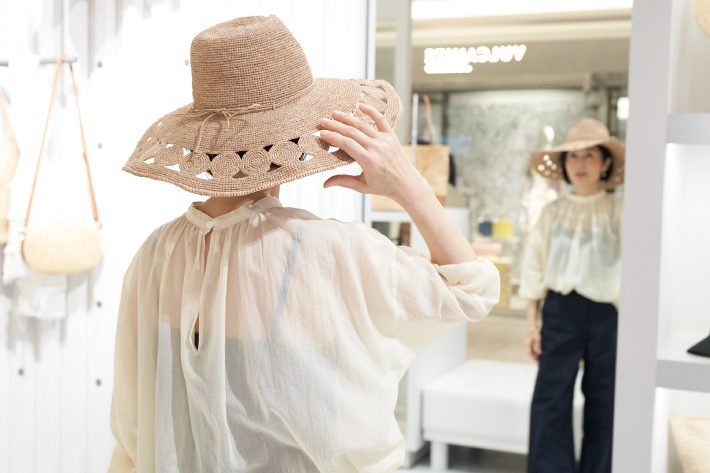
“Sisley”(38000日元)手工编织的图案很有个性。帽子都是用天然材料制作的。这个帽子用的是拉菲亚。据说是为了寻求最棒的拉菲亚而来到了马达加斯加产的。随着年龄的增长,颜色也发生了变化,这也是只有真正才有的味道。

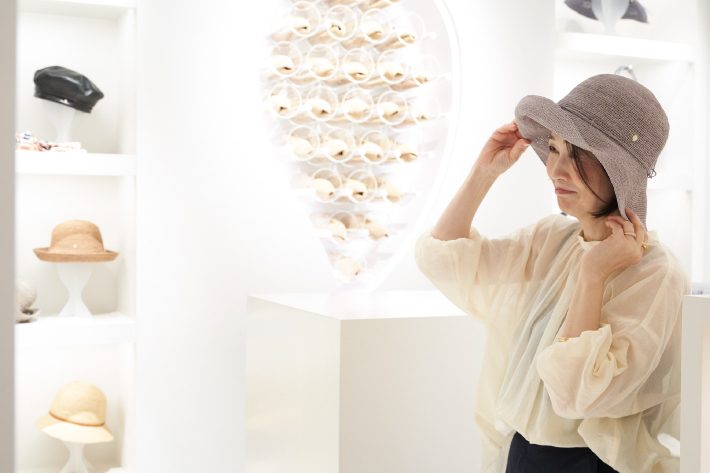
现在是今年春夏系列集齐聚一堂的时期。这次排列的颜色很丰富,也有淡色调的。这个灰色的色调很高雅。遮阳伞“Kirsten”(21000日元)是近年来人气商品。最想要的是下面照片的经典商品“Provence 12”(30000日元)。虽然有棉质狭窄的东西,但是可以卷起来收纳,是旅行中不可缺少的物品。这是大头贴的。可以提高或降低purim,自由自在地做出形状也很方便。
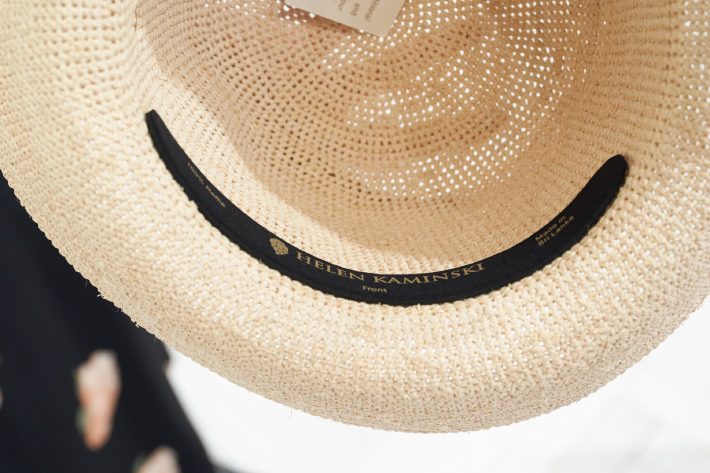
店里教了我怎么保养的方法。换了模具的话,用蒸汽可以自己修理,店里也可以修理。内侧的霓虹灯是可以更换的(收费)。细致的服务支撑着帽子老字号。
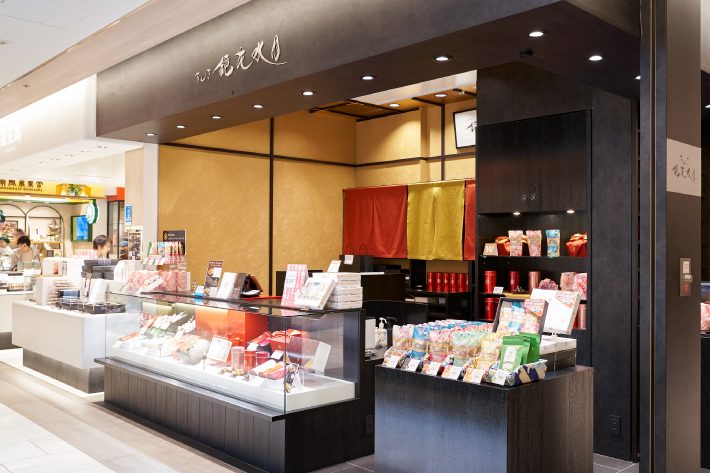
选择帽子的话,差不多该在地下买特产吧。去过好几次的B2F美食区。我发现了かりとう的店“银杏镜花水月”实际上是我最喜欢的汤岛老字号かりとう专卖店“花月”的新品牌。灯塔下黑! 持续吃数十年的店的かりとう在银座开店。这个必须买!

新品牌的商品有三种。从跟前开始,在加入了甜酒的面团上撒上国产黄豆的“海女”。在小麦粉里加入糯米,做成松软的口感,浇上糖的“こはく”(中)。小又容易吃的尺寸。将黑芝麻做成糊状混入糖中的“麻友泉”。无论哪一种和以前的香脆都不一样的味道和口感。

GINZA SIX 2周年限定品・3种组合(1,950日元)。江户和现代银座交叉的插画引人注目。竟然是第三代的沟口智广社长画的。对于我来说,希望不是限定商品,而是固定的。银座是特产的宝库,这边的かりとう也在我的特产手册上写着!
在GINZA SIX上闲逛了2个小时左右,这次的3家都是以前就知道的店。虽然各自都有着悠久的历史,但是不甘心于现状,而是进化的。都是以“温故知新”为基础的老字号。确实是“温暖故,了解新事物”2个小时。银座有所有的东西,还有制作物品的菲洛索菲。请在GINZA SIX上寻找能够贴近你的菲洛索菲。
Text:Mika Kitamura Photos:Futoshi Osako Edit:Yuka Okada
“Ginza has everything,” remarked a Kabuki actor I interviewed around 20 years ago. “It’s got the whole lot, doesn’t it? From specialist tabi (Japanese socks) stores and kimono boutiques to places where you can buy everyday food ingredients to high-quality restaurants.” He is right. In Ginza, I buy some food on my way back from work or pick out gifts for my friends or family. I also go to Ginza frequently to attend meetings at cafés, take in plays, or dine on celebratory occasions. I grew up in Tokyo, but this may be the district I visit most. And now there’s a great new destination for me: GINZA SIX, the whole of Ginza distilled into one place containing more than 240 stores of quite remarkable variety. I have an afternoon meeting today, so around lunchtime I wander over to GINZA SIX. As a food journalist, I start by checking out the restaurants and cafés. “Oh, this place would be perfect for my next meeting,” I think.

My first stop is a café at Nakamura Tokichi Honten on the fourth floor. Specializing in Uji tea (a tea from Uji in Kyoto prefecture), it was founded in Uji in 1854, the first year of the Ansei era. The phrase Saen Eijitsu Kanbashi (aroma of tea on a long spring day), inscribed on a scroll presented as a gift from Katsu Kaishuu, was adopted as the family motto, and gifts of tea were offered to the emperor. The name of the tea blend was chosen by a tea ceremony master. The company has been in the tea business ever since. This is the same teahouse that came up with the revolutionary idea of combining matcha (powdered green tea) and ganache some 20 years ago, an innovation that quickly became popular. Today, I take a seat by the window, where I can look down on the brick-paved Azuma Street. The street is just 100 meters long or so, but it has a shop I like and an atmosphere that evokes the history of Ginza. This place is one of the best-kept secrets for teatime in Ginza.

There’s a tea set on the table. “This is the tea of the day,” I’m told. You can try various teas that change each day. Today’s is Nakamura-cha, the representative brand sold by Nakamura Tokichi Honten, a blend of seven types of medium- and high-grade tea. In the world of tea, the term gogumi describes the blending of tea.

It’s just before lunchtime. Looking at the menu, I decide I feel like eating something with a Kyoto flavor. I choose Pacific herring with matcha soba (1,204 yen; all prices listed before tax). Matcha is kneaded into the soba flour. The dish also features slightly sweet and tender simmered Pacific herring. The flavor of the dashi seeps deep into the body. Served as a side dish, the Murakamijyu Honten pickles are great for cleansing your palate. These are flavors you would normally encounter only in Kyoto. At all the other branches, including the main store in Uji, the server says, the dish is only offered in the autumn. Here at Ginza, it’s served year round. In Tokyo, and especially in Ginza, Kansai-style soba is rare. The restaurant is also renowned for its desserts, but this very soba will set it apart as a café I plan to return to in the future.

Still, what ends up catching my eye is the parfait. It’s topped with fresh whipped cream, on top of which the teahouse emblem, a cross inside a circle, is beautifully drawn with matcha. The parfait contains layers of matcha chiffon cake, matcha ice cream, Shiratama dango (sweet rice dumplings), namacha (freshly picked tea leaves) jelly, and matcha soft serve ice cream. There’s also crunchy wheat arare (bite-sized crackers) and raspberries, as well as candied chestnuts and Tanba Dainagon azuki beans, all of it building to a tea-flavored symphony. The sweetness is just right and the flavors subtle: the mellow deliciousness of the tea stands out. Even though I’ve just had soba, I find myself gulping it down. (Maruto parfait [matcha]) (1,297 yen).

The interior features tables and counter seats arranged in a U. Guests included those on their own, parents with children, and groups. It gets crowded at lunchtime, so I recommend going in the morning.

You also have to try the Nakamura Tokichi Honten tea! They have every variety you can imagine. The medium-grade tea balances sweetness, richness, and bitterness. The premium tea presents the depth you associate with Uji tea. There’s also roasted tea, which has a milder flavor. All this is explained to me by Haruna Hino, the manager, who demonstrated a wealth of product knowledge and genuine affection for the products—a level of care that attests to the sincerity of the teahouse.


This is the “nama-chacolate” (the term “chacolate” coined from cha, the Japanese word for tea, and “chocolate”) (1,200 yen) I reported on 20 years ago. Right from the beginning, the goal was to achieve a singular, authentic flavor. I remember being struck by the potential of the long-established teahouse. The humorous naming of the product was also clever and made me chuckle. Nowadays the teahouse offers a range of popular products, most notably the namacha jelly, for which waiting lines form, as well as matcha castella cake and matcha cheesecake with candied chestnut.

Anticipation builds as you pull aside a large noren (curtain hung at the entrance to traditional shops in Japan) that is the hallmark of long-established shops.

The fourth floor, where Nakamura Tokichi Honten is located, is also home to fashion and lifestyle stores. Strolling around, I come across one of my favorites: Helen Kaminski. Around ten years ago, when I traveled to and from Australia for work, I bought a hat at one of the stores there. I still wear it all the time. The brand traces its roots to 1983, when founder Helen Kaminski handcrafted a raffia hat to shield her children from the searing Australian sun.

I got a pet dog recently, and I’ve been looking for a hat I can wear when I take it for walks. I’m drawn to the ones with wide brims. I soon find one I like, the Acheron (38,000 yen). It has a classic profile and a leather band.

The Sisley (38,000 yen) is unique for its handwoven pattern. All the hats are made from natural materials. This one is made of raffia. Apparently, the designer went looking for the finest raffia and settled on one made in Madagascar. As the years pass, the color may change, but this adds to the brand’s authentic character.


The brand recently launched this year’s spring/summer collection. The hats currently on display have a variety of hues; you’ll find pale tones, too. This greige shade is elegant. The Kirsten sun visor (21,000 yen) has been one of the brand’s most popular products in recent years. But the hat I want the most is the classic Provence 12 (30,000 yen) shown in the photograph below. I have the same one with a narrower brim. It can be rolled up for storage, which makes it a travel essential. This one has a wider brim, which can be turned up or down to suit the light, the elements, or the mood.

The staff presented words on proper hat care. If the hat loses its shape, you can restore it yourself by applying steam. You can also bring it in to the store, where the staff will do it for you. The neoprene band inside the hat can be replaced (for a fee). This attentive service helps explain why it’s such a long-established hat brand.

After choosing my hat, it’s time to head down to the basement to buy some presents. I go to the food area on the second belowground floor, a place I visit frequently. I realize that Ginza Kyoka Suigetsu, a karintou (fried dough cake) shop, is a new brand operated by Kagetsu, a long-established karintou shop in Yushima that I love. It’s amazing to have come all this way only to find a store, the company’s first in Ginza, selling the karintou I’ve been eating for decades. I just have to buy some!

Three types are sold under the new brand. From the front of the photograph, the first one is Ama. Amazake (sweet sake) is kneaded into the dough, which is coated with Japanese roasted soy flour. Next is Kohaku (middle), for which glutinous rice is added to wheat flour, which is then fried and glazed to create a light, crunchy texture. They’re small, convenient bite sizes. And, finally there’s Mayuzumi, for which black sesame seeds are made into a paste, which is mixed with sugar glaze. The flavor and texture of each is a slight departure from conventional karintou.

A limited-edition assortment (1,950 yen) is available to celebrate the second anniversary of GINZA SIX. It features an eye-catching illustration, apparently drawn by third-generation president Tomohiro Mizoguchi that mixes old Edo with modern Ginza. I wish it were available all the time, not just for a limited period. Ginza is a treasure trove for presents, and I’m definitely making a note of the karintou here!
I strolled around GINZA SIX for about two hours. All three stores I visited are places I knew about before. Each has a long history, but they aren’t content to rest on their laurels. Quite the opposite: they’re choosing to evolve. They’re learning from the old to create the new. Truly, it was a two-hour period in which I visited the old and became acquainted with the new. Have I mentioned that Ginza really does have everything and that palpable here are philosophies regarding how things are made? Why not come visit GINZA SIX to go looking for a philosophy that matches yours?
Text:Mika Kitamura Photos:Futoshi Osako Edit:Yuka Okada
北村美香
饮食记者。经过广告代理店工作,师从食记者大本幸子。从欧洲三星到韩国小巷的餐厅、不丹农户,我们将在世界24个国家品尝美食。在《朝日新闻》、《妇女公论》、《T Japan web》等专栏连载。在《Ecla》、《T Japan》、《Aera Style Magazine》、《Numero Tokyo》等作品中进行企划编辑和执笔。为了传达家庭料理的重要性,《乌·温的家庭料理的8个基本》(文艺春秋)等,很多食谱书的企划编辑很多。


